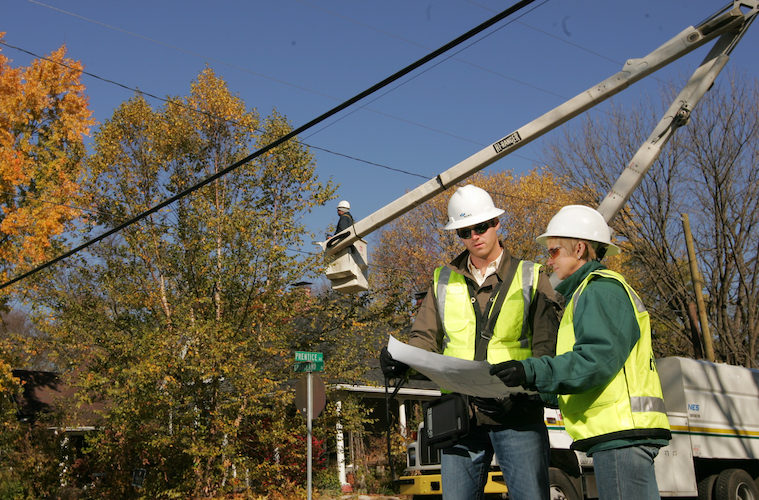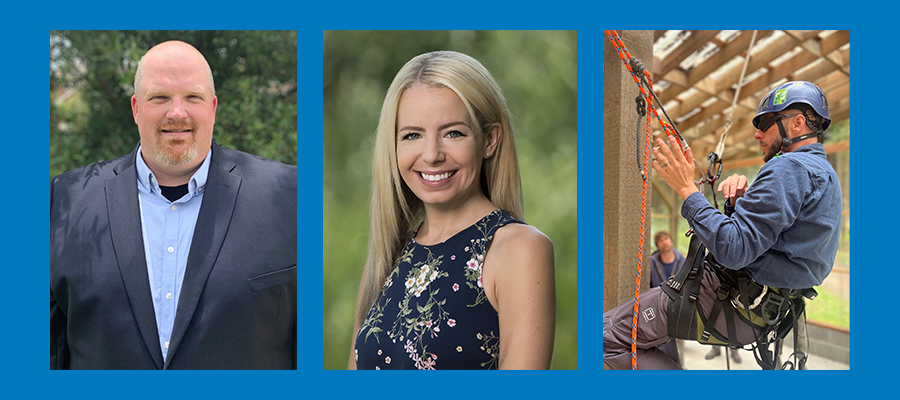- Vegetation Management Services
- Industries
- In Your Neighborhood
- About
- Careers
- Webinars
- Articles
Clearing Up Incidental Line Clearance

November of 2017 saw the release of the revised ANSI Z133 arboriculture safety standards at the TCIA trade show in Columbus, Ohio. Last updated in 2012, the new ANSI Z133-2017 standards instituted changes and additions such as a hand saw requirement when working aloft, mandatory outrigger pads and a minimum of two wheel chocks when using aerial devices, and an advisory recommendation to use a sling during winching operations, rather than wrapping the winch line around the load.
One of the most significant changes, however, was in the Electrical Hazards section. It identifies three types of tree worker qualifications: 1) non-qualified, 2) Incidental Line Clearance Arborist, and 3) Utility Line Clearance Arborist. With the addition of the Incidental Line Clearance Arborist qualification, many arborists have found themselves unsure about their qualification category. Some non-qualified workers are using the new incidental minimum approach (MAD) chart as an excuse to get closer to electrical conductors than they are allowed, and qualified line clearance arborists don’t know which MAD chart to use. Hopefully, this article will help to make the incidental qualification clearer.
Before the 2017 revision, arborists were either qualified or non-qualified to work around energized conductors. Qualified arborists followed the minimum approach distances (MAD) in Table 1 of the Z133-2012 standard. Non-qualified arborists would use Table 2. Fundamentally, this is still the same — arborists are either qualified or non-qualified based on their training and experience.
However, arborists that are qualified through training and experience will fall into either Incidental Line Clearance or Utility Line Clearance. These might sound similar, but there is a significant difference. To determine the right category, Incidental Line Clearance first needs to be defined:
Tree work performed where an electrical hazard exists to the arborist, but the arborist is not working for the purpose of clearing space around the conductor on behalf of the utility that controls or operates the wires/lines.
Arborists that fall into the Incidental Line Clearance category do not have a relationship with a utility, nor are they contracted with one. However, they have met the training requirements of OSHA 1910.269 and are considered qualified by their employer to work around electrical hazards. An example might be a municipal arborist who maintains street trees that are growing within 10 feet of an electrical conductor or a residential arborist who plans to work on a client’s tree which has a service drop running through the canopy. This contrasts with Utility Line Clearance Arborists, who have permission from utilities to work around their conductors and have received safety and operations protocols training from that utility.
Additionally, although they are qualified, Incidental Line Clearance Arborists typically don’t work within 10 feet of energized conductors on a daily basis. Therefore the MAD is greater than that of a Utility Line Clearance Arborist who is exposed to the hazard regularly.
With the addition of Incidental Line Clearance, arborists should note that the MAD charts have been reorganized since the 2012 revision:
- Table 1 — MAD chart for non-qualified individuals
- Table 2 — MAD chart for Incidental Line Clearance
- Table 3 — MAD chart for Utility Line Clearance
Despite Incidental Line Clearance Arborists working separately from utilities, section 4.2.4 of the Z133-2017 specifies a minimum amount of training and experience required for qualification. Incidental Line Clearance Arborists must be able to distinguish exposed live parts of electric equipment, what the voltage of the exposed live part is, and what the minimum approach distance to the exposed live part would be.
The new revision also adds that “Arborists’ training and degree of training in electrical hazards shall be determined by the risk to the employee for the hazard(s) involved” (4.1.3). This section makes employers responsible for ensuring employees receive the appropriate training in electrical hazards based on the work they perform. However, this is only part of the puzzle. Whether you fall under the Incidental Category of the Utility Category, Qualified Line Clearance Arborists must have:
- Documented electrical training
- Documented on the job training
- Documented aerial rescue training
- Documented First Aid and CPR training
- The employer must certify that the individual is qualified
For more information on Line Clearance arboriculture and to find out if you are qualified, read 29 CFR 1910.269 as well as the new ANSI Z133-2017. If you are interested in Line Clearance training, please visit the new ACRT Arborist Training website at training.acrt.com.
Kevin Myers, CTSP, ISA-certified arborist, and ISA-certified Utility Specialist, is an arborist training instructor with ACRT Arborist Training, and a recipient of the 2016 UAA Silver Shield Award.
Related Articles

Servant Leadership in Utility Vegetation Management By C. Troy Ross, President, ACRT and ACRT Pacific On a chilly Monday morning, a utility vegetation management crew gathers for their weekly briefing. Instead of launching into instructions, their supervisor begins by asking each team member how they’re doing. One mentions a child’s illness, another shares excitement about[...]
Read More
Turning Vegetation Waste into Opportunity By Aana Agrawal, Sustainability and Resilience Manager, EnviroScience The utility vegetation management (UVM) sector plays a crucial role in ensuring the smooth transmission of power across regions and cities by keeping plant growth under control within the vicinity of transmission and distribution lines. However, unrefined vegetation maintenance practices often focus[...]
Read More
Reflections from Will Nutter Silver Shield Award Recipients By Bob Urban, Senior Manager, ACRT Services In an industry where the stakes are high and every decision can have life-altering consequences, leadership in utility arboriculture isn’t just a managerial function; it’s a calling. Nowhere is this more evident than in the recipients of the Will Nutter[...]
Read More
The Electric Butterfly: Reconnecting with Nature on the Edges By Ryan Meccage, Business Development Manager, ACRT Services In an age dominated by smartphones, constant connectivity, and algorithm-driven content, we’ve never been more digitally immersed. Yet somehow, we’ve also never felt so far removed from the natural world beneath our feet. The urge to step away[...]
Read MoreRecent Posts
- Alex Fields Awarded ACRT Safety Challenge Coin 20th Nov 2025
- Servant Leadership in Utility Vegetation Management 12th Nov 2025
- ACRT Honors Our Veterans 10th Nov 2025
- Anna Davis Awarded Safety Challenge Coin 04th Nov 2025
- ACRT Senior Consulting Utility Forester Recognized as Safety Superstar 15th Oct 2025
Categories
The Leader In Vegetation Management
We are all about people, and we put safety first. Ready to work with our well-trained team?